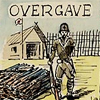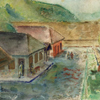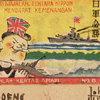Drawings from the camps in the occupied Dutch East Indies (1942-1945) > The occupation of the Dutch East Indies

The Japanese attack on the American fleet near Pearl Harbor on 7 December 1941 meant that the southeast of Asia had become involved in World War II. Japan conquered most countries in the region with the objective of eliminating the influence of Western countries in Asia. The KNIL (Koninklijk Nederlands-Indisch Leger/Royal Netherlands-East Indies Army) surrendered on 9 March 1942. The soldiers, some 42,000 of them, were made prisoners. In the course of the following months, the citizens of the Allied Powers and of other western countries, about 100,000 persons all in all, were interned in civilian camps. The Dutch national flag disappeared; from then on Japan’ s white flag with the rising sun flew everywhere.
To the camps

Immediately after the KNIL’s surrender, the Japanese tried to ‘Japanify’ the Dutch East Indies. The Japanese time zone and the Japanese calendar were introduced: The clock was set ahead an hour and a half and the year 1942 became the year 2602. Dutch schools were closed, Dutch newspapers and magazines forbidden. All Dutch people over 17 years had to register and buy an identity card. In the course of 1942 and 1943 all whites had to live in camps. They disappeared behind barbed wire in camps that were spread over the whole archipelago. These camps were located in schools, monasteries, railway sheds, barracks, prisons and fenced-off city neighbourhoods. There were hundreds of camps in the Dutch East Indies at the time, camps for men, camps for women and camps for prisoners of war. Most of these people remained interned for at least three years.
Outside the camps
Unlike the Europeans, most Eurasians – people of mixed ethnicity – did not get interned; they remained free. Their exact number is not known, but it is estimated at between 120,000 and 200,000. Internment did not apply to Eurasians until 1944 and 1945, the last years of the occupation. Life was rough for those who had remained outside the camps, the so-called outmates. Many breadwinners had been made prisoners of war, others had lost their jobs to native-born people, pensions did not get paid out anymore, European schools had been closed. Besides, increasing pressure to cooperate with the Japanese was put on the Eurasians, leading to their forced integration into the society of the original population. Outmates who refused to cooperate eventually ended up in camps.
Japanese propaganda

Japanese politics were aimed at blotting out western influence and mobilizing the population in favour of the Japanese war effort. The Japanese used propaganda as a means to gain the favour of the population. They availed themselves of all possible media: radio, newspapers, loudspeakers, films, billboards, etc. The radio broadcast Japanese lessons three times a week. The Japanese took school plates along when they went to remote places in order to reach people who could not read. Children were influenced by books specially written for them.
